It's best to leave snakes alone, but if you do get a fresh rattlesnake, you might as well eat it.
Let me start with a caveat. I hate killing snakes — even the venomous species. I can't count the times I've shared a western Kentucky fishing hole with a cottonmouth, or a woodlot of squirrels with a copperhead. As long as I see them first, it's all good. Still, venomous snakes and small kids, pets, or livestock don't mix.
From time to time, a buddy will call and report a recently-deceased rattlesnake, just in case I want it. I usually do. Rattlesnake meat is white, tender, and tastes like a cross between frog legs and turtle. While there are a lot of rib bones, a big rattlesnake has a backstrap-like muscle that runs the entire length of the backbone. Once cooked, that muscle peels out easily, giving the diner a boneless bite of goodness.
Think you might want to try one in the future? Here's how wildlife biologist Joe Lacefield and I skin and process a rattlesnake for the table, T2T style. Save the skin for a hat band, nifty wall display, or decorative backing for a self-bow.
(Don't Miss: Deep-Fried Spicy Rattlesnake Recipe)
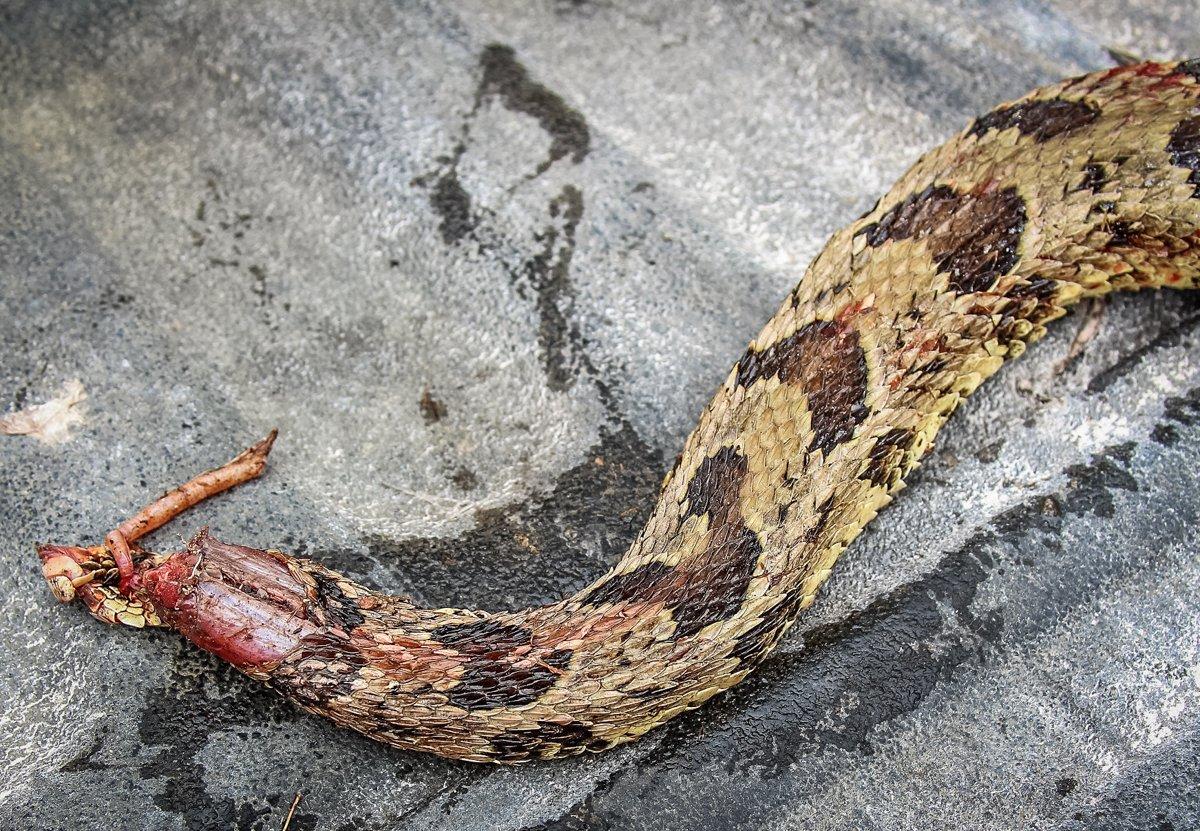
Step 1. Remove the head. Dead rattlesnakes can still bite. It's a nervous system deal, similar to a turkey that flops around for a few minutes after a fatal shot. Don't mess with the head. Don't take any chances. If the head wasn't removed by a shotgun blast, use a long-handled hoe or a machete to remove it from a distance. Use a long-handled shovel to pick it up and dispose of it safely, away from curious pets or kids. If you can't remove the head from a safe distance, just don't mess with it at all. While rattlesnake meat is great to eat, it isn't worth receiving a bite.
Just like wild mushrooms, you might only get one chance to mess this up. If you aren't confident in your ability to do it safely, find an expert to help you.
(Editor's Note: Realtree, Timber2Table, and the author are NOT responsible for any injuries incurred while hunting, killing or prepping snakes.)
Besides safety concerns, it's important to always check your state and local regulations when it comes to killing or possessing a rattlesnake. They are a protected species in many areas. If you plan on gifting a rattlesnake to a friend in another state or area, check the regs in both places. Transporting a rattlesnake across state lines where they might be protected can result in federal wildlife violations.
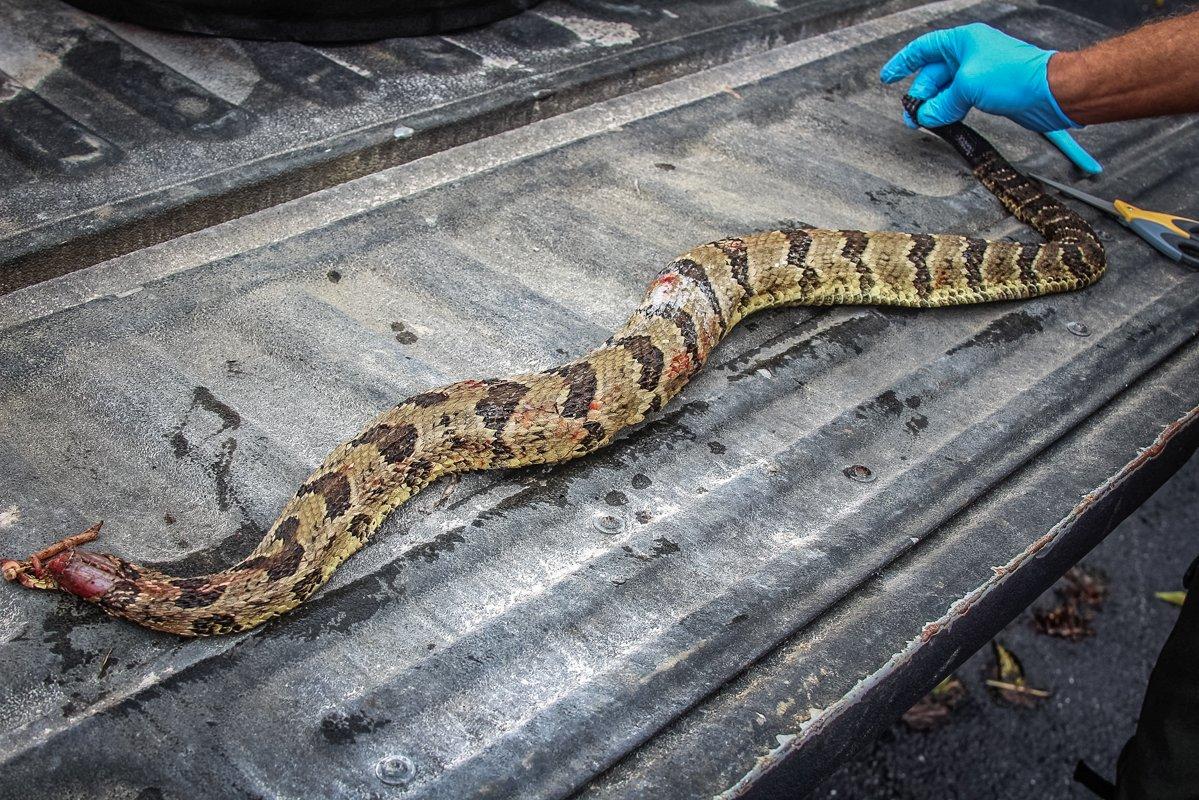
Step 2. Wear a pair of latex gloves. Snakes, like raw chicken or turtle, can carry salmonella. Since you probably aren't next to a sink and soap while you are cleaning them, gloves offer protection. Just like chicken or turtle, rattlesnake meat should be cooked to at least 165 degrees internal temperature for safety.
(Don't Miss: Texas Men Discover Rattlesnake Den Under Hunt Cabin)
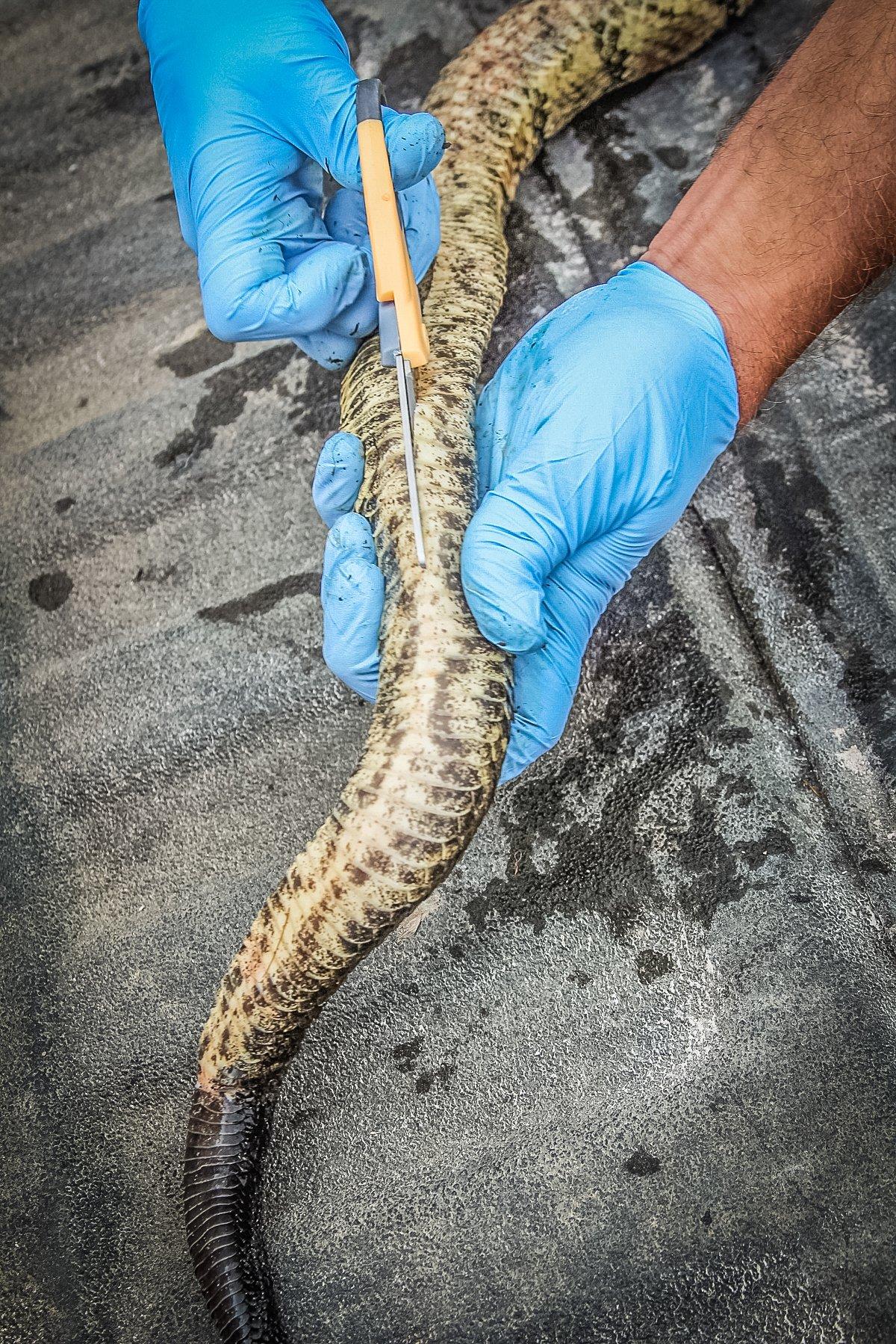
Step 3. Use a pair of scissors to open the snake's belly. Start where the head used to be (before you safely removed it), down to the tip of the tail.
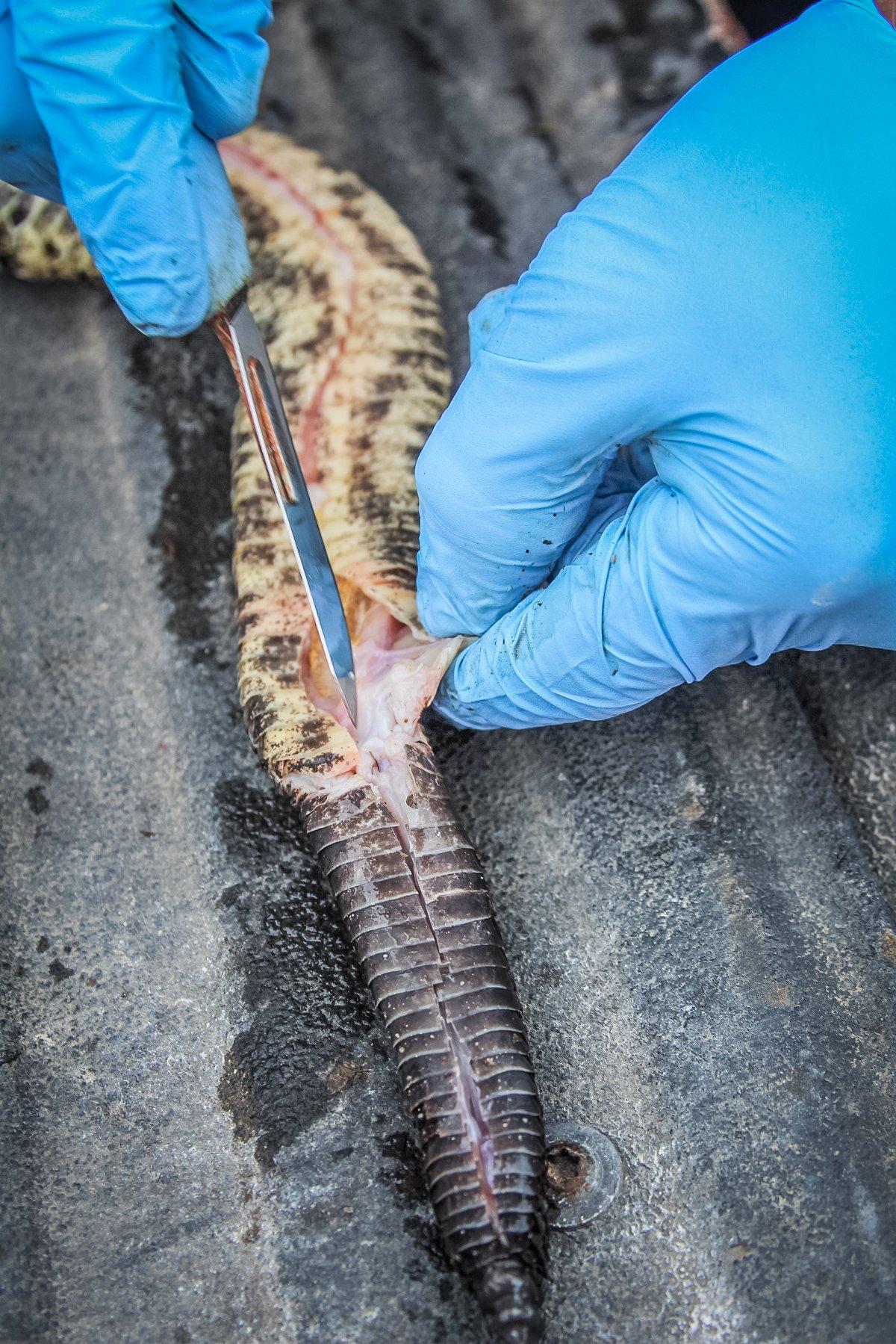
Step 4. Use a sharp knife to loosen the skin around the neck area of the snake to start separating it from the meat. Move down to the tail and loosen the skin in front of the rattles the same way so that it doesn't tear when you get down to that part in the skinning process.
(Don't Miss: Rattlesnakes Take Over Texas Yard)
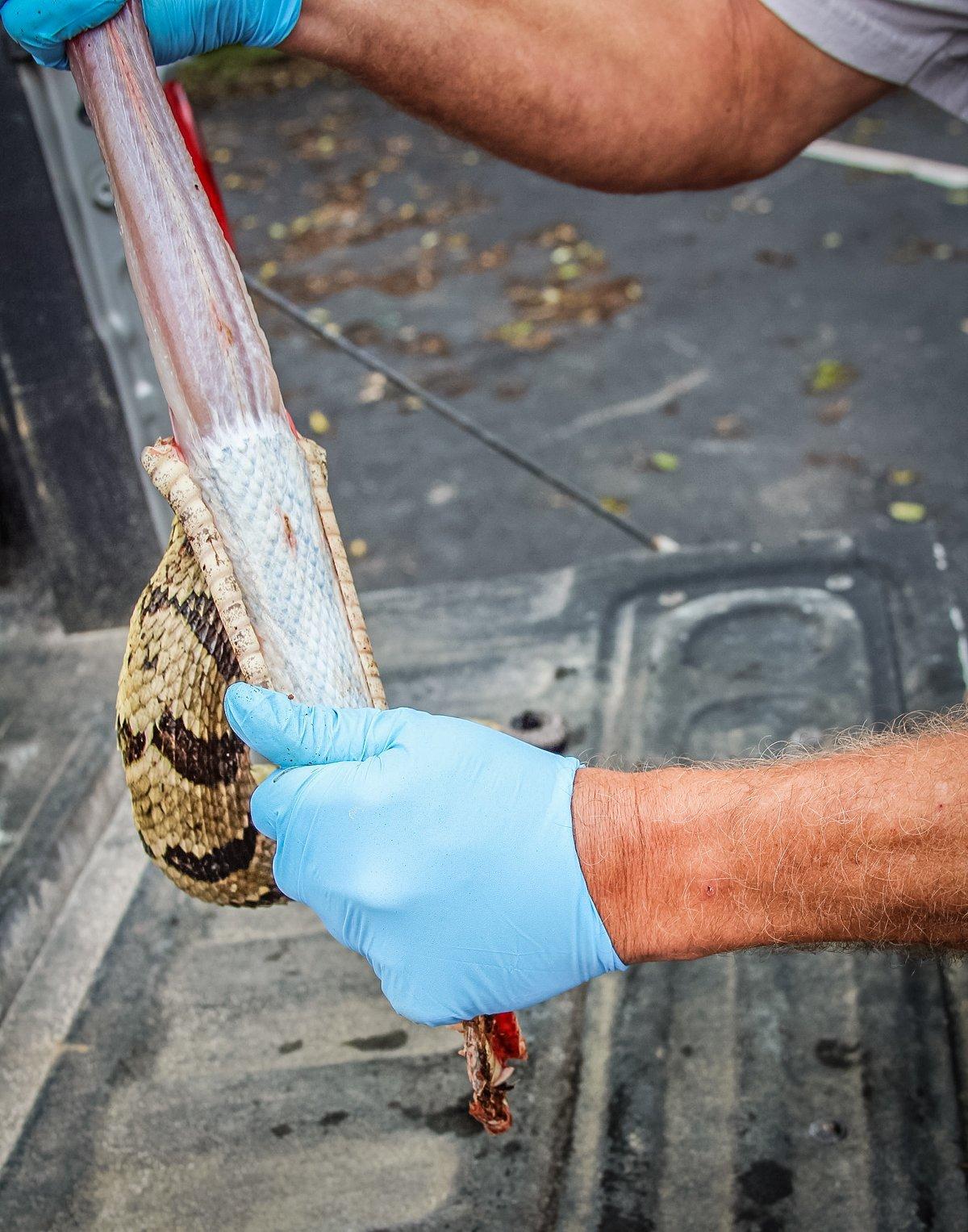
Step 5. Grasp the rattlesnake in your left hand and get a grip on the skin at the neck with either your right hand or a pair of pliers. Peel the skin downward, just like peeling a banana. Roll the skin and place it in the freezer, or stretch it (scales down) on a long board and apply salt or Borax liberally, covering every square inch of skin.
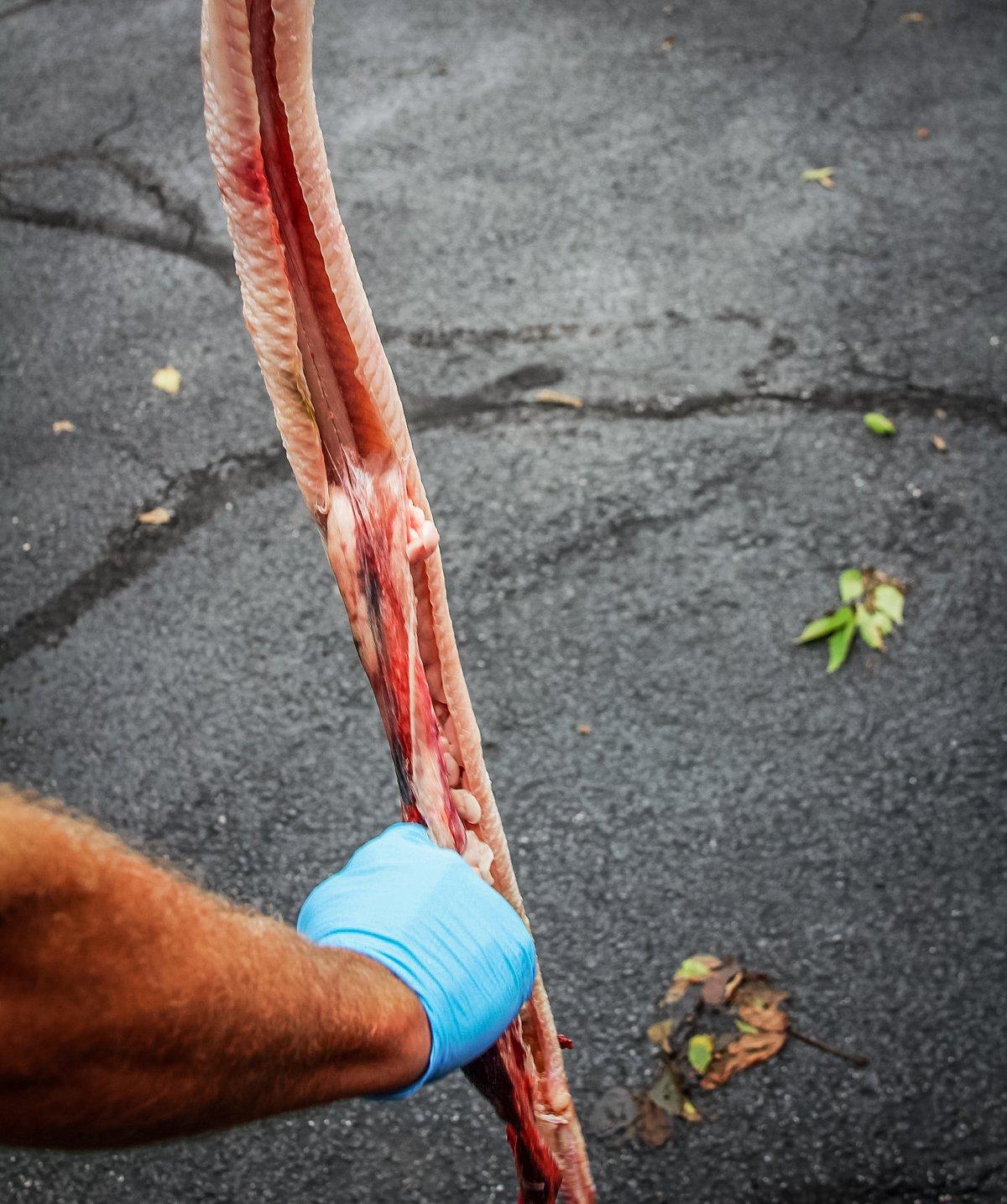
Step 6. Remove the entrails from the body cavity. They should pull out in one long piece, leaving the cavity clean.
(Don't Miss: Snakes! Turkey Hunting Encounters)

Step 7. Cut the rattlesnake in cross sections, about 2-3 inches in length. Leave the narrow sections of the neck and tail longer, since there isn't as much meat on those. The thicker sections from the center of the body get cut into shorter lengths so that everything cooks in the same amount of time.







